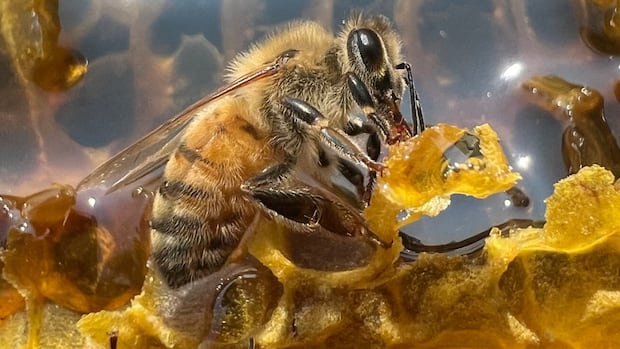NASA spacecraft releases capsule with material plucked from asteroid

A NASA spacecraft passed by the Earth on Sunday and released its capsule containing rare fragments from the asteroid Bennu, ending a journey that began seven years ago.
The flyby by OSIRIS-REx will allow the storage capsule to re-enter Earth’s atmosphere and parachute down onto a U.S. military area in Utah’s West Desert, two years and four months after leaving the carbon-rich asteroid, where the craft collected about 250 grams of material.
OSIRIS-REx had travelled to a crater in the asteroid’s northern hemisphere where it lowered a robotic arm into the surface to extract the third and largest sample ever taken from an asteroid in the first mission of its kind for NASA.
Canada had an important role to play, providing an instrument called the OSIRIS-REx Laser Altimeter (OLA), which scanned and measured the surface of the 500-metre-wide asteroid, creating a 3D model that helped mission planners decide where to land.
Science adviser to the president of the Canadian Space Agency John Moores said the contribution means scientists in Canada will have access to a small portion of the asteroid material.
“In total, we laid down more than three billion measurements … so this now provides a very highly precise map of the asteroid,” said Cameron Dickinson, a staff engineer at Canadian space company MDA Ltd., which designed the Canadian component of the spacecraft.
Japan will also get some of the bounty, after returning to Earth with much smaller samples from two other asteroids in 2010 and 2020, giving NASA a portion each time.
2-year analysis
The capsule that sucked up loose rocks and pebbles for NASA was due to land in Utah at 10:55 a.m. ET, after a journey home of nearly two billion kilometres.
It’s estimated a recovery team will need a day to take the capsule apart and prepare the sample for transport to a new lab at NASA’s Johnson Space Centre in Houston, where a two-year analysis will take place. The sample will be revealed to the public on Oct. 11.
Bennu, discovered in 1999, is classified as a “near-Earth object” because it passes relatively close to our planet every six years.
Tim Haltigin, planetary senior mission scientist with the Canadian Space Agency, has worked on the project for a decade. Asteroids, he said, are leftover ingredients from the formation of the solar system, and getting a sample from one “is sort of like going back into a cosmic mixing bowl and pulling out individual grains of sugar and a bit of flour and, you know, maybe a chocolate chip.”
“And so this is how we’re able to study the raw ingredients of the solar system as they were billions and billions and billions of years ago,” Haltigin said.
Now free of the sample capsule, Osiris-Rex is already targeting the asteroid Apophis for an encounter scheduled for 2029, as the space rock makes its closest known flyby of Earth.




